i bc27f85be50b71b1 (148 page)
Read i bc27f85be50b71b1 Online
Authors: Unknown

assistance if necessary?
•
What are the patient's mobility needs?

478
AClITE CARE HANDBOOK FOR PHYSICAL TI-IERAPISTS
A review of vascular tests, radiographic studies, and tissue biopsy
results also lends valuable information about the integrity of the vascular and orthopedic systems and the presence of underlying disease.
Physical Exami1!atio1!
Sensation
Sensation to light touch, pressure, pinprick, temperature, and kinesthesia or proprioception, or both, should be examined. Impaired or absent sensation should be addressed through instruction in the
appropriate prevention techniques, as well as modifications to shoes,
weight bearing, and water temperatures in bathing.
Pain
The evaluation of pain in the patient with a wound is not unlike the
evaluation of pain in any other type of patient. The therapist should
evaluate the nature of the pain, including the location, onset, severity
(using a pain-rating scale), duration, aggravating and alleviating facrors, and the impact on activities of daily living. Understanding the nature of the pain will ultimately allow the physical therapist to provide or recommend the appropriate intervention.
The pain experience associated with wounds has been described as
having one of three components: a noncyclic acute component, a
cyclic acute component, or a chronic wound pain component.
Noncyclic acute Waf/lid paill is a single episode of acute pain that is
likely ro occur with treatment (e.g., the pain felt during sharp debridement). Cyclic acute pain is wound pain that recurs throughout the day because of repeated treatments. For example, a patient may experience pain after several days of dressing changes, which creates repetitive trauma to the wound. Chronic wound pain is persistent wound pain that occurs intrinsically, nOt as a result of external intervention
(e.g., a patient with a neuropathic ulcer who has a constant, dull ache
in the foot).62
Range of Motion
Specific measurement of ROM may not be necessary in a patient with
a wound. However, specific goniometric measurements are necessary
if a wound crosses a joint line, if edema is present at a joint, or if
decreased ROM inhibits mobility. Decreased ROM that inhibits
mobility or increases weight bearing, pressure, or both may conrrib-


BURNS AND WOUNDS
479
ute to wound development. Therefore, passive or active ROM exercise, or both, should be included, as necessary, in the treatment plan.
Strength
Strength should be evaluated for its impact on the patient's function.
The therapist should keep in mind that the patient may have different
functional demands secondary to the wound. For example, a patient
who needs ro be non weight bearing because of a wound on his or her
foot requires sufficient upper-extremity strength to use an assistive
device to maintain this precaution while ambulating. if the parienr
does not have adequate upper-extremity strength, then he or she may
be nonambularory until the weight-bearing Status is changed.
Functional Mobility
Functional mobility, including bed mobility, transfers, and ambulation or wheelchair mobility, should be evaluated. The therapist should consider that the patient's function may have changed simply because
of the consequences of the pre ence of the wound. For example, balance may be compromised if the patienr requires orthotics or shoe modifications because of a wound. Gait training with an assistive
device is often necessary to decrease weight bearing on an affected
lower extremity.
Edema and Circulation
The evaluation of edema is important because it is frequently an indicaror of an underlying pathology. Edema is also a critical factor in lowering tissue perfusion of oxygen and increasing susceptibility to
infection. In fact, edema is almost equivalent ro insufficient blood
supply in lowering the oxygen tension in the area of the wound. Ultimately, the presence of edema must be addressed to heal the wound.
Refer ro Table I -6 for the scale on how to grade (pitting) edema.
Therapists should also consider that lymphedema and chronic
wounds can be closely linked. Lymphedema is commonly associated
in individuals who aTC status post mastectomy; however, it can also
occur after other surgeries and traumas. Cellulitis may actually be due
ro a compromised lymphatic system that creates small, weeping blisters from fluids being literally pushed through the skin. In addition, edema secondary ro chronic venous insufficiency frequently also has a
lymphatic component.
Circulation can be grossly evaluated and monitored by examining
skin temperature, distal limb color, and the presence of pulses. Refer


480
AClJTE CARE HANDBOOK FOR PHYSICAL THERAI'ISTS
to Vascular Evaluation in Chapter 6 for more information on the
evaluation of circulation. The therapist should notify the physician
when any significant changes in these indicators occur. The therapist
should be aware of any arterial compromise before using compression
bandages.
WOUlld Illspectioll alld EvalllatiOlI
Wound observation and measurements create an objective record of
the baseline status of a wound and can help to determine the best
intervention to facilitate wound healing.
Location, Orientation, Size, and Depth
The location of the wound should be documented in relation to anatOmic landmarks. The orientation of a wound; its length, width, and depth; or the presence of undermining (tumleling); or a combination
of these factors, are essential measurements in wound assessment.
The orientation of the wound must be determined to ensure consistent length and width measurements, parricularly for a wound with an abstract shape or odd location. One method of determining wound
orientation is to consider the wound in terms of a clock, with the
patient'S head being 12 o'clock.
When documenting length, the measurement is the distance of the
wound (measured in the direction from the patient'S head to toe), and
the width is the horizontal measurement. There are a variety of methods for measuring wounds. Tape measurements are one method, bur a calibrated grid on an acetate sheet on which the wound can be traced
is optimal, especially for irregularly shaped wounds. Polaroid photographs on grid film can also be used.
Clinical Tip
•
When taking a photOgraph of a wound, create or follow a consistent procedure for taking photOgraphs, as
changes in the distance of the camera from the wound, as
well as the position of the patient, can affect the appearance of the wound .
•
Also, to ensure consistency and accuracy in wound
assessments, a consistent unit of measure should be
llsed among all individuals measuring the wound. Cen-


